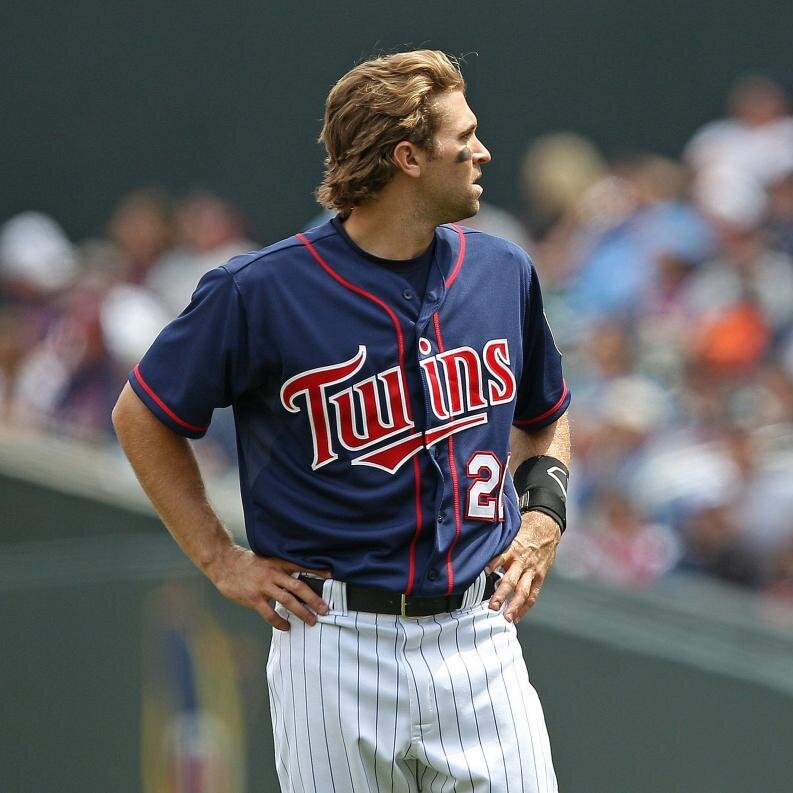There are many elements that are in play when predicting the
worth of a free agent. One has to look at the player’s track record, age,
health situation, recent numbers and countless other variables.
 |
| Please don't call them Twinkies. |
With that said, here is what I would say these Minnesota Twins would be worth on this year’s free agent market.
Phil Hughes – After
signing a three-year deal with the Twins as a free agent last year, Hughes had
a breakout season in 2014.
The right-hander threw 209 innings with 186 strikeouts.
While his 3.52 ERA, though respectable, doesn’t stand out in a crowd, his
peripheral numbers suggest this figure should be much lower.
Fielding Independent Pitching, the basis for how effectively
a pitcher prevents hits and walks while maximizing strikeouts, is the best measure
for how to truly judge the worth of a pitcher.
Hughes’ FIP in 2014 was a stellar 2.65.
| Can Hughes build off of his brilliant Minnesota debut? |
To translate that into a free-agency lens, it was lower than
Jon Lester’s (2.80), who just signed a six-year deal with the Chicago Cubs
worth $155 million.
While Lester certainly has a better track record than
Hughes, the annual value of this type of pitcher is comparable.
Price tag for Phil
Hughes: $85 million, five-year contract.
Glen Perkins –
Even with a rough, injury-limited final month of the 2014 season, Perk showed
that he is a proven closer.
The hometown lefty still threw fire in clutch situations,
hitting 97 MPH on the radar while closing out the All-Star game last July.
| Glen Perkins: Proven Closer. |
One would think that without that sore shoulder hampering
his performance in August and September, Perkins would have had some of the
best numbers among relievers in the American League.
Keeping his health situation in mind, the Twins’ closer
would still presumably command a decent haul in free agency.
Price tag for Glen
Perkins: $28 million, three-year contract with an option for a fourth year
based on performance.
Trevor Plouffe – The
Twins’ third-baseman quietly had a very productive season in 2014.
Though he hasn’t displayed the power that fans saw in 2012
when he hit 24 homeruns, he has maintained solid offensive numbers.
Not to mention, his defense at third base (once considered
to be the thorn in his side) has improved considerably.
| Plouuuuuuuuffffeeee |
His dWAR, a figure that measures a player’s Wins Above a
Replacement-level player based on defensive metrics, pegged his 2014 campaign
as a full win above average.
That makes Plouffe worth roughly $5 million dollars on his
defense alone.
With another step up in 2015, he could easily establish
himself as one of the better third-baseman in the AL.
Price tag for Trevor
Plouffe: $42 million, four-year contract.
Brian Dozier – Though
the young infielder is still pre-arbitration eligible, meaning he has less than
three full seasons of major league experience, one cannot ignore his
performance over that time.
Dozier has seen improvement in most of his stats with each
year including games played, hits, homeruns, runs batted in, stolen bases and
on-base percentage.
Not to mention, he has established himself as one of the
best infield defenders in the league over the past year.
 |
| Brian Dozier: Great player, better hair. |
If Dozier takes a similar step forward in 2015, his
offensive numbers would look something like this:
.250/.360/.435
25 HR
80 RBI
28 SB
That would surely be All-Star worthy play for a player who
is about to enter the prime age for professional athletes.
Price tag for Brian
Dozier: $56 million, five-year contract with performance-based bonuses.
Joe Mauer – Who
would have thought that the face of the franchise would be the hardest player
to peg in regards to worth?
Since Joe had such a head-scratcher of a season in 2014,
let’s just look at a simple pros vs. cons list.
Pros: Joe has a Hall-of-Fame considerable track
record, with well-above average seasons every year except 2011 and 2014.
One could make the argument that, at age 32, Mauer still has
a lot of gas left in the tank.
Though his catching days are behind him, he can still play
first base, third base and even right field if needed, though the argument
could be made that it would be best for him to focus on just one of those positions.
 |
| Above Average Joe |
Cons: Joe was sidelined by injuries yet again in
2014. Though there is not much anybody can do for an oblique strain, it was
certainly bothersome for fans to see Joe play in only 120 games.
Also, Mauer is now five years separated from his MVP season
in 2009 when he crushed 28 homeruns. Since then, he has only averaged seven per
year.
Though power has never been a priority with Joe, it is still
something to consider when measuring a player’s overall worth.
Price tag for Joe
Mauer: $60 million, four-year contract with options for a fifth and sixth year
based on performance.

